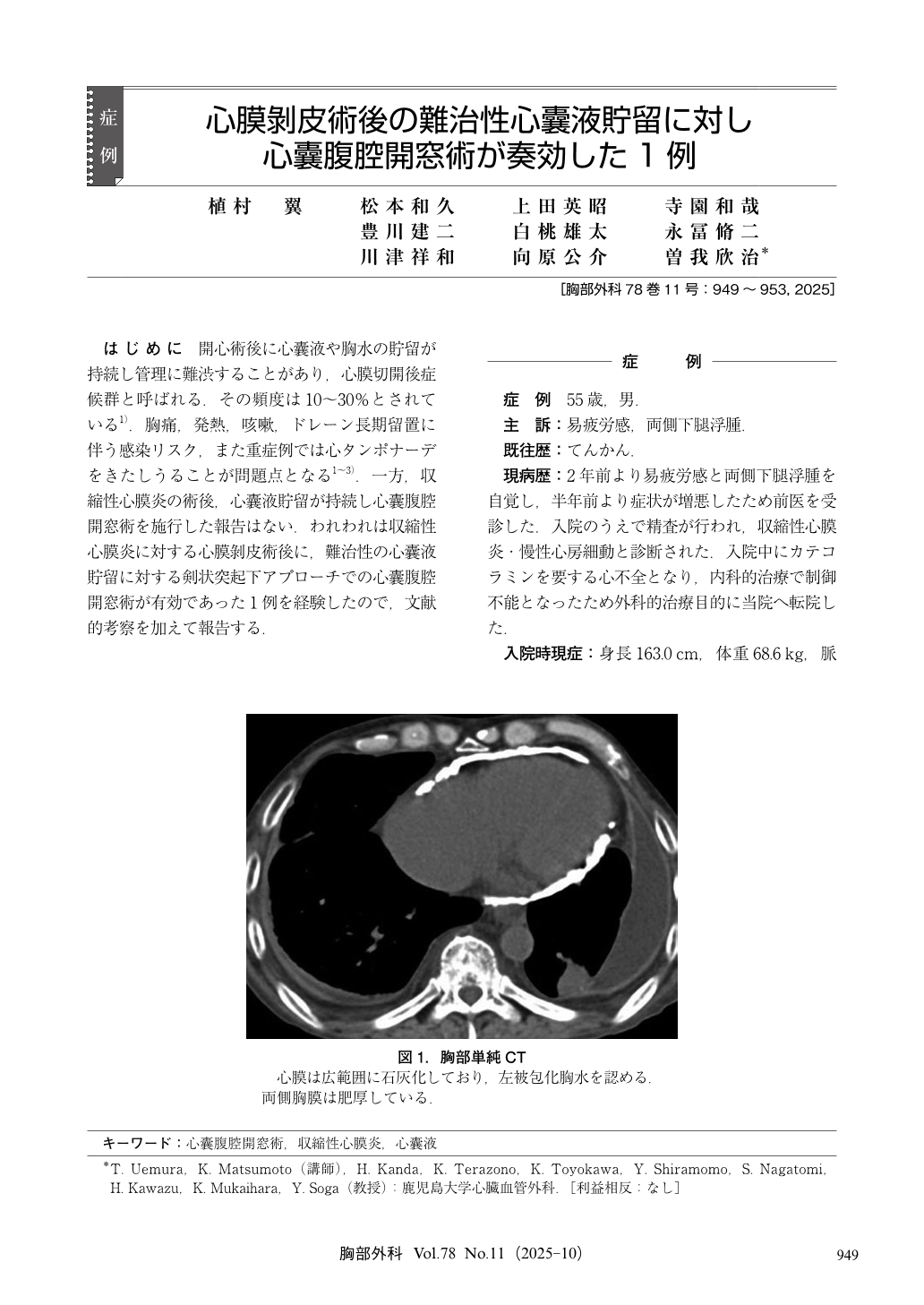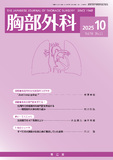Japanese
English
- 有料閲覧
- Abstract 文献概要
- 1ページ目 Look Inside
- 参考文献 Reference
はじめに 開心術後に心囊液や胸水の貯留が持続し管理に難渋することがあり,心膜切開後症候群と呼ばれる.その頻度は10~30%とされている1).胸痛,発熱,咳嗽,ドレーン長期留置に伴う感染リスク,また重症例では心タンポナーデをきたしうることが問題点となる1~3).一方,収縮性心膜炎の術後,心囊液貯留が持続し心囊腹腔開窓術を施行した報告はない.われわれは収縮性心膜炎に対する心膜剝皮術後に,難治性の心囊液貯留に対する剣状突起下アプローチでの心囊腹腔開窓術が有効であった1例を経験したので,文献的考察を加えて報告する.
A 55-year-old male patient, who was diagnosed as having constrictive pericarditis. He was transferred to our hospital for surgical treatment because of uncontrollable heart failure requiring catecholamine, which was uncontrollable by medical treatment. Postoperative drainage from the pericardial drain tube did not decrease, diuretics and anti-inflammatory drugs were not effective, so a pericardioperative peritoneal window was opened on 34 days after surgery. Postoperatively, it could be controlled with diuretics within two weeks after the window opening. He was discharged from the hospital 37 days after the window opening. Refractory pericardial effusions that do not improve with drug therapy require drainage, but if the drainage volume does not decrease, window opening into the abdominal or thoracic cavity may be an option.

© Nankodo Co., Ltd., 2025


